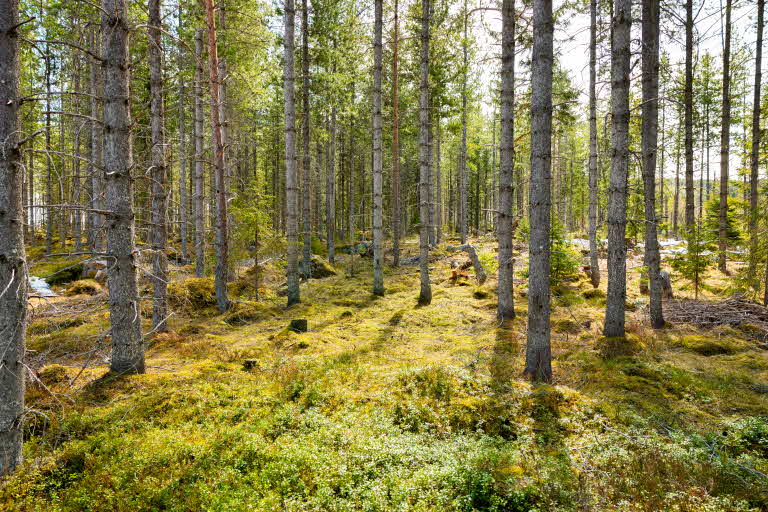
- FOREST
- SCA's FORESTS
- RESPONSIBLE FORESTRY
- CONTORTA PINE
Contorta pine
The contorta pine is a Canadian tree species that grows 40% faster compared with Swedish pine on the same land. SCA has about 300,000 hectares on its land. This corresponds to 15 percent of SCA's productive forest land. Contorta pine was introduced in Sweden in the early 1970s, after extensive experimentation and evaluation, especially of environmental effects.

The contorta pine (Pinus contorta) was introduced in Sweden in the early 1970s, after extensive experimentation and evaluation, especially of environmental effects.
SCA began planting lodgepole in the 1970s. Today, lodgepole is found in many Swedish forests and is the sixth most common tree species. In North America, Lodgepole Pine is the trade name for lodgepole and there it is one of the most common conifer species.
SCA have around 15 percent Contorta pine on the own forest holdings.
The Contorta pine Growth is over one million cubic meters per year. Contorta pine is resistant to several of the diseases that can affect Swedish pine — leaf rust, for example — and it is not the object of browsing moose to the same extent.
As a result of contorta growing faster than Swedish pine, contorta pine forest is denser; ground flora is thus pushed out. Contorta pine also disrupts reindeer husbandry, in part by pushing out ground lichens in the denser contorta forests and in part by making it difficult for reindeer to pass through, which makes moving herds more difficult.
Good for the climate
Contorta pine also has great advantages from a climate point of view. Because it grows so fast, it binds a lot of carbon dioxide. That it grows 40 percent faster than Swedish pine corresponds to an uptake of 800,000 tonnes of extra carbon dioxide per year on SCA's land!
The high growth means that we quickly gain access to more renewable raw materials and can manufacture more climate-smart products. They can replace products made from materials that have a negative impact on the climate and more fossil coal can thus remain on the slopes. Lodgepole pine is therefore important for our contribution to limiting global warming.
Consultation with Sámi
All use of contorta pine on reindeer grazing land is discussed in consultation between SCA and the Sámi villages concerned; SCA does not plant contorta pine where it risks disrupting reindeer husbandry.
The Swedish FSC standard permits limited used of contorta pine, and SCA does not plant contorta pine closer than one kilometer from nature reserves. Contorta pine may not constitute more than 20% of the forest in a larger landscape.
Contorta pine can self-regenerate to a limited extent, above all where the ground has been disturbed — for example, in a roadside ditch.